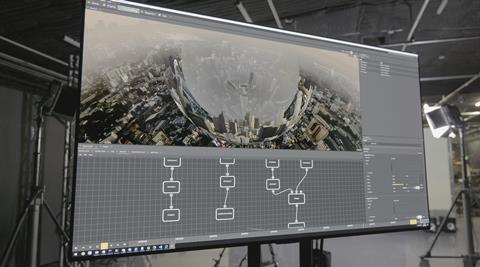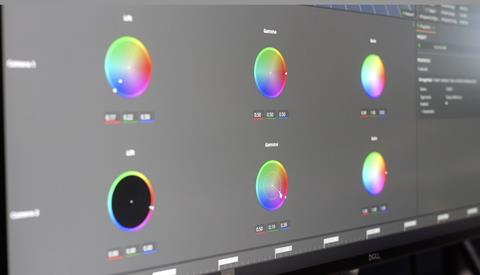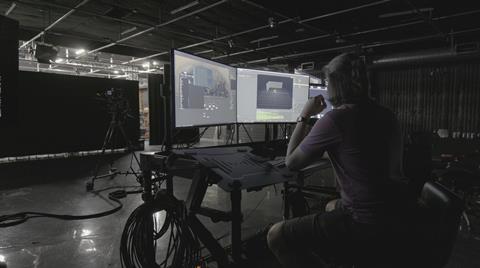The VFX software has been purpose-built for virtual production and in-camera visual effects

Foundry has announced Nuke Stage, a new application purpose-built for virtual production and in-camera visual effects.
The software developer says Nuke Stage links pre-production to final pixels in one pipeline, giving VFX artists creative control over imagery and colour from start to finish, increasing efficiencies and simplifying virtual production workflows.
Nuke Stage enables real-time playback of photorealistic environments onto LED walls, as well as live compositing and layout.
It uses a node-graph-based compositing environment consistent with Nuke.

Christy Anzelmo, Foundry chief product officer, said: “Nuke Stage was envisioned specifically for virtual production, bringing key aspects of compositing tailored for real-time playback in an on set environment, and utilising open standards to ensure consistency between pre-production, on-set, and post.
“Our hope is that Nuke Stage brings the expertise of VFX artists even closer to creative decision making, and, ultimately, delivers greater efficiencies for productions using virtual production and ICVFX. After years of development fueled by collaboration with the VFX and VP community, I can’t wait to see Nuke Stage in the hands of artists.”
Dan Hall, head of in-camera visual effects at virtual production studio 80six, adds: “Nuke Stage offers a handshake between VFX and virtual production, which has been missed in VP until now. With VP and in-camera visual effects, it’s all about trust. Getting VFX teams on board will help to push the use of virtual production, in a meaningful way, and I see huge potential for Nuke Stage to do that.”

Sam Kemp, production technical lead at Garden Studios adds: “I love the idea of bringing VFX compositing tools into real time. The ability to bring in the compositing toolset and color management from 3D, then be able to tweak 2D assets in real time, is something that’s been missing from virtual production for a long time.”
Connor Ling, virtual production supervisor at Framestore, says: “VFX Supervisors will typically be very familiar with Nuke, so having integration from that into the on-set components will only encourage trust and confidence between on-set and the VFX vendors, that what is being seen on the LED wall is what has been authored.”
Nuke Stage features include:
- Built for virtual production: A purpose-built standalone software solution, Nuke Stage requires no other virtual production, in-camera visual effects tools, or game engines.
- Hardware-agnostic: No need for specialist media servers or bespoke equipment. Productions can use their preferred hardware and easily synchronise across render node clusters to support stages of varied size.
- Real-time playback of photorealistic content: Artists can use industry-standard VFX tools and asset formats to create high-resolution backgrounds, then play them back as 2D, 2.5D and 3D imagery on LED walls.
- Live compositing: Manipulate and blend virtual and physical sets with a powerful node-based compositing toolkit optimized for real-time performance.
- Comprehensive colour support: A linear workspace and full support for OpenColorIO and HDR ensure a clear color pipeline from pre- to post-production, making it easier to seamlessly blend physical elements with virtual environments.
- Familiar UI: Part of the market-leading Nuke family: A color management system, industry-standard file format support, and a node-based compositing toolkit similar to Nuke provide artists with a familiar and efficient workflow for building imagery before and during principal photography.
- End-to-end creative control: A single production pipeline enables refinement of content from principal photography through to post-production, ensuring creative continuity and reducing the risk of costly rework.




No comments yet